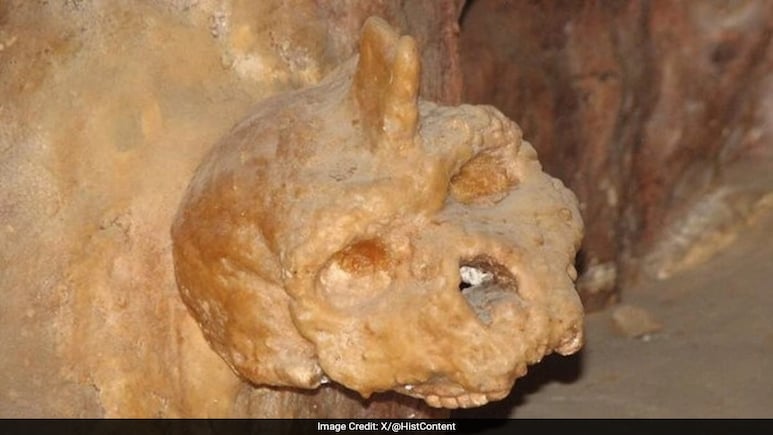
- The Petralona skull was discovered in 1960 in a cave in northern Greece
- Uranium-thorium dating indicates the skull is at least 286,000 years old
- The skull likely belongs to Homo heidelbergensis, distinct from Neanderthals and Homo sapiens
A mysterious 300,000-year-old skull discovered over 60 years ago may have been finally identified. Originally found attached to a wall in Petralona Cave in northern Greece in 1960, the Petralona skull has baffled scientists for long who could not identify its origins. Now, after using a precision technique called uranium-thorium dating, scientists claim that the skull might belong to a primitive, extinct hominid that lived alongside the Neanderthals.
Once thought to be between 170,000 and 700,000 years old, the uranium-series analysis of the calcite coating on the skull found it to be at least 286,000 years old. The findings align with previous research suggesting that the individual may have lived in Europe alongside Neanderthals, but was part of the Homo heidelbergensis group, which is distinct from both Homo sapiens and Neanderthals.
This group lived between 300,000 and 600,000 years ago, evolving in Africa, with some populations migrating to Europe 500,000 years ago.
"From a morphological point of view the Petralona hominin forms part of a distinct and more primitive group than Homo sapiens and Neanderthals, and the new age estimate provides further support for the coexistence of this population alongside the evolving Neanderthal lineage in the later Middle Pleistocene of Europe," the study published in Journal of Human Evolution highlighted.
According to a report in New York Post, the European population of Homo heidelbergensis evolved into Neanderthals, while the African populace may have been the predecessors of modern humans.
The Petralona Cave, where the skull was found, is located in Chalkidiki, about 50 km from the city of Thessaloniki, Greece. The cave was developed in the Upper Jurassic limestone of Mount Katsika where an important horizontal karstic network runs for several hundred meters.
The difference between other sites and Petralona is that the skull had been fused to the wall by a gradual accretion of calcite – a stalagmite protruding, unicorn-like, from its forehead. After analysing the fossil's size and robustness, scientists believe that the individual was male, hence the moniker "Petralona man".
The Greek cranium also bears striking similarities to a skull found in a cave in Kabwe, Zambia. The Kabwe skull has been dated to around 300,000 years ago, and is now generally classified as Homo heidelbergensis.
Track Latest News Live on NDTV.com and get news updates from India and around the world

